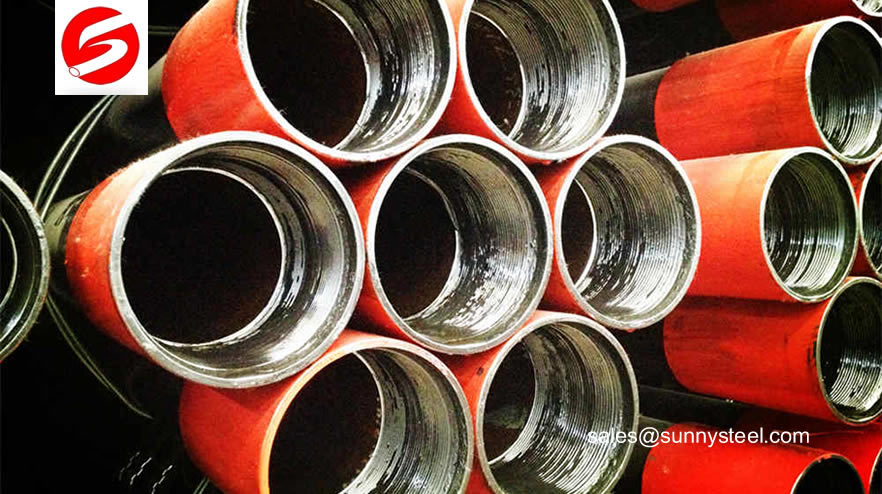It has a supperior corrosion resistance in special applications where it is desired to reduce contamination to a minimum. 317L was developed primarily to resist more effectively the attack of sulfurous acid compounds. Howerver, its proven ability to combat corrosion has widened its use considerably and is now being used for many other industrial applications.
The low carbon content of 317L provides immunity to intergranular corrosion in applications where heavy cross sections cannot be annealed after welding or where low temperature stress relieving treatments are desired.
Specifications - Stainless Steel 317L
- ASTM: A312, A403, A182
- ASME: SA312, SA403, SA182
Chemical Composition - Stainless Steel 317/317L
| Grade | 317 | 317L |
|---|---|---|
| UNS Designation | S31700 | S31703 |
| Carbon (C) Max. | 0.08 | 0.035* |
| Manganese (Mn) Max. | 2.00 | 2.00 |
| Phosphorous (P) Max. | 0.040 | 0.04 |
| Sulphur (S) Max. | 0.03 | 0.03 |
| Silicon (Si) Max. | 1.00 | 1.00 |
| Chromium (Cr) | 18.0–20.0 | 18.0–20.0 |
| Nickel (Ni) | 11.0–14.0 | 11.0–15.0 |
| Molybdenum (Mo) | 3.0–4.0 | 3.0–4.0 |
| Nitrogen (N) | — | — |
| Iron (Fe) | Bal. | Bal. |
| Other Elements | — | — |
Typical Mechanical Properties- Stainless Steel 317L
| Material | Ultimate Tensile Strength (Mpa) | 0.2 % Yield Strength (Mpa) | % Elongation in 2" | Rockwell B Hardness |
| Alloy 317 | 515 | 205 | 35 | 95 |
| Alloy 317L | 515 | 205 | 40 | 95 |
| Minimum Mechanical Properties by ASTM A240 and ASME SA 240 | ||||
Design Features - Stainless Steel 317L
- A molybdenum bearing austenitic chromium nickel steel with an alloy content somewhat higher than the 316 grades.
- Superior corrosion resistance in difficult environments.
- Higher creep, stress-to-rupture and tensile strengths than other stainless steels.
- Reduced intergranular precipitation of chromium carbides during welding and stress relieving as well as minimized possibility of corrosion failure from intergranular attack due to low carbon content.
- Resistance to pitting and crevice corrosion making 317L a successful life-cost product in a variety of highly corrosive environments.
Typical Applications - Stainless Steel 317L
- Flue gas desulfurization scrubber systems
- Chemical and petro-chemical processing equipment
- Pulp and paper plants
- Food processing equipment
- Textile equipment
Tensile Requirements - Stainless Steel 317L
Tensile Strength (KSI): 75
Yield Strength (KSI): 30
317L(1.4438) General Property
Alloy 317LMN and 317L are molybdenum-bearing austenitic stainless steel tube with greatly increased resistance to chemical attack as compared to the conventional chromium-nickel austenitic stainless steel pipe such as Alloy 304. In addition, 317LMN and 317L alloys offer higher creep, stress-to-rupture, and tensile strengths at elevated temperatures than conventional stainless steels. All are low carbon or "L" grades to provide resistance to sensitization during welding and other thermal processes.The "M" and "N" designations indicate that the compositions contain increased levels of molybdenum and nitrogen respectively. The combination of molybdenum and nitrogen is particularly effective in enhancing resistance to pitting and crevice corrosion, especially in process streams containing acids, chlorides, and sulfur compounds at elevated temperatures. Nitrogen also serves to increase the strength of these alloys. Both alloys are intended for severe service conditions such as flue gas desulfurization (FGD) systems.
In addition to excellent corrosion resistance and strength properties, the Alloys 316, 316L, and 317L Cr-Ni-Mo alloys also provide the excellent fabricability and formability which are typical of the austenitic stainless steel tubing .
317L (1.4438) Heat Treatment
Annealing
The austenitic stainless steel pipe are provided in the mill annealed condition ready for use. Heat treatment may be necessary during or after fabrication to remove the effects of cold forming or to dissolve precipitated chromium carbides resulting from thermal exposures. For the Alloys 316 and 317L the solution anneal is accomplished by heating in the 1900 to 2150°F (1040 to 1175°C) temperature range followed by air cooling or a water quench, depending on section thickness. Cooling should be sufficiently rapid through the 1500 to 800°F (816 to 427°C) range to avoid reprecipitation of chromium carbides and provide optimum corrosion resistance. In every case, the metal should be cooled from the annealing temperature to black heat in less than three minutes.Forging
The recommended initial temperature range is 2100-2200°F (1150-1205°C) with a finishing range of 1700-1750°F (927-955°C).Annealing
317LMN and Alloy 317L stainless steels can be annealed in the temperature range 1975-2150°F (1080-1175°C) followed by an air cool or water quench, depending on thickness. Plates should be annealed between 2100°F (1150°C) and 2150°F (1175°C). The metal should be cooled from the annealing temperature (from red/white to black) in less than three minutes.Hardenability
These grades are not hardenable by heat treatment.Alloys 316 and 317L stainless steel tube cannot be hardened by heat treatment.









